Ecologie Evolutive
Le département d'Ecologie Evolutive rassemble des compétences complémentaires en écologie comportementale, dynamique des populations, biologie des populations, écologie communautaire et méthodologie (statistiques et modélisation). Les recherches menées dans le département visent à étudier la façon dont les espèces animales évoluent dans un environnement variable en comprenant les causes de l'évolution des traits, des adaptations et des interactions. Pour cela, nous considérons différents niveaux d'organisation : individus, populations, communautés. Comme les organismes ne peuvent pas être considérés comme isolés des autres facteurs biotiques, nous considérons les pathogènes mais aussi les espèces en compétition au sein des communautés.
Nous étudions comment les individus s'adaptent à leur environnement qui est largement impacté par les pressions anthropiques, et comment les traits d’histoire de vie et le comportement évoluent en réponse à ces pressions. Bien que nous nous intéresserons principalement au phénotype, nous considérons de plus en plus le lien mécaniste entre le génotype et le phénotype. Nous développons le cadre théorique de notre discipline par une approche conceptuelle et de modélisation. En parallèle, nous testons les hypothèses qui découlent des prédictions théoriques par des approches expérimentales, comparatives et observationnelles sur différents modèles biologiques (insectes, oiseaux, mammifères). Les approches expérimentales sont développées en laboratoire (modèles insectes) et en milieu naturel (modèles oiseaux, insectes et mammifères). Les études observationnelles et comparatives concernent principalement les vertébrés. Nos approches s'intéressent également, et de plus en plus, aux mécanismes des réponses adaptatives. En plus des approches classiques d'analyse démographique et de changement de traits, des méthodes d'écophysiologie, d'écologie chimique et de biologie moléculaire sont utilisées.
Notre département porte également plusieurs suivis à long terme sur les populations sauvages de différentes espèces. Ces études à long terme offrent un moyen précieux de comprendre comment les facteurs biotiques et abiotiques affectent les traits d’histoire de vie des individus, et le fonctionnement des populations naturelles. Cinq populations d'espèces de mammifères sont ainsi suivies depuis plusieurs années (plus de 40 ans pour les chevreuils, 30 ans pour les marmottes des Alpes, 25 ans pour les chats, 16 ans pour les zèbres et 20 ans pour les impalas). Deux de nos sites d'étude, La Sassière dans le Parc national de la Vanoise (marmottes des Alpes) et le Parc national du Hwange, ont été certifiés "Site d'Etude en Ecologie Globale" (SEEG), et deux (ZA "Hwange" et ZA "Antarctique et sub-Antarctique") ont été certifiés "Zone Atelier" par le CNRS.
Le département d'écologie évolutive est également largement impliqué dans les activités de formation. Enfin, nous avons également des relations socio-économiques fortes. Nous abordons des questions d'intérêt sociétal majeur (réchauffement climatique, santé publique) et nous collaborons donc étroitement avec des partenaires socio-économiques (Office Français de la Biodiversité, Parc National de la Vanoise, Parc National de Hwange au Zimbabwe, Office National des Forêts, etc.) et participons à des événements grand public et médiatiques.
Publications
Affichage des publications 2221 à 2250 sur 2449 au total
Matching data sets from two different spatial samples
Journal of Vegetation Science . 13 : 867-874
Article dans une revue
voir la publicationSex- and age-dependent effects of population density on life history traits of Red deer (Cervus elaphus) in a temperate forest.
Ecography . 25 : 446-458
Article dans une revue
voir la publicationVariable modes of inheritance of morphometrical traits in hybrids between Drosophila melanogaster and Drosophila simulans
Proceedings of the Royal Society B: Biological Sciences . 269 : 127-135
Article dans une revue
voir la publicationUse and misuse of correspondence analysis in codon usage studies
Nucleic Acids Research . 30 : 4548-4555
Article dans une revue
voir la publicationHost Patch Selection Induced by Parasitism: Basic Reproduction Ratio R0 and Optimal Virulence
Theoretical Population Biology . 62 : 97-109
Article dans une revue
voir la publicationModeling the Lag Time of Listeria monocytogenes from Viable Count Enumeration and Optical Density Data
Applied and Environmental Microbiology . 68 : 5816-5825
Article dans une revue
voir la publicationAsymmetric directional mutation pressures in bacteria
Genome Biology . 26 : 1-14
Article dans une revue
voir la publicationResource limitation in natural populations of phytophagous insects. A long-term study case with the chestnut weevil
Acta Oecologica . 23 : 31-39
Article dans une revue
voir la publicationEffects of annual rainfall and habitat types on the body mass of impala (Aepyceros melampus) in the Zambezi Valley, Zimbabwe
African Journal of Ecology . 40 : 186-193
Article dans une revue
voir la publicationVariations in adult body mass in roe deer: the effects of population density at birth and of habitat quality
Proceedings of the Royal Society B: Biological Sciences . 269 : 747-753
Article dans une revue
voir la publicationGeographic distribution of Triatoma dimidiata and transmission dynamics of Trypanosoma cruzi in the Yucatan peninsula Mexico
American Journal of Tropical Medicine and Hygiene . 67 : 176-183
Article dans une revue
voir la publicationThe diet of feral cats (Felis catus L.) at five sites on the Grande Terre, Kerguelen archipelago
Polar Biology . 25 : 833-837
Article dans une revue
voir la publicationSpatio-temporal variation in cat population density in a sub-Antarctic environment
Polar Biology . 25 : 90-95
Article dans une revue
voir la publicationGeographical and seasonal differences in morphology and dynamics of the coccolithophore Calcidiscus leptoporus
Marine Micropaleontology . 46 : 363-385
Article dans une revue
voir la publicationInfluence of biotic and abiotic environment on dental size and shape evolution in a Late Miocene lineage of murine rodents (Teruel Basin Spain)
Palaeogeography, Palaeoclimatology, Palaeoecology . 184 : 163-175
Article dans une revue
voir la publicationPublic information and breeding habitat selection in a wild bird population
Science . 297 : 1168-1170
Article dans une revue
voir la publicationWithin-plot relationships between tree species occurrences and hydrological soil constraints: an example in French Guiana investigated through canonical correlation analysis
Plant Ecology . 162 : 143-156
Article dans une revue
voir la publicationSerosurvey for Newcastle disease and avian influenza A virus antibodies in great cormorants from France.
Journal of wildlife diseases . -- : 169-171
Article dans une revue
voir la publicationMale sterility thermal threshold in Drosophila: D. simulans appears more cold-adapted than its sibling D. melanogaster
Genetica . 114 : 195-205
Article dans une revue
voir la publicationPhenotypic plasticity of adult size and pigmentation in Drosophila : thermosensitive periods during development in two sibling species
Journal of Thermal Biology . 26 : 351-361
Article dans une revue
voir la publicationPhenotypic plasticity of body pigmentation in Drosophila: influence of a developmental thermoperiodic regime in two sibling species
Physiological Entomology . 27 : 124-135
Article dans une revue
voir la publicationA mathematical method for determining genome divergence and species delineation using AFLP
International Journal of Systematic and Evolutionary Microbiology . 52 : 573-586
Article dans une revue
voir la publicationA mathematical method for determining genome divergence and species delineation using AFLP
International Journal of Systematic and Evolutionary Microbiology . 52 : 573-586
Article dans une revue
voir la publicationPhylogeny of the genus Apodemus with a special emphasis on the subgenus Sylvaemus using the nuclear IRBP gene and two mitochondrial markers: cytochrome b and 12S rRNA
Molecular Phylogenetics and Evolution . 23 ( 2 ) : 123-136
Article dans une revue
voir la publicationCHILL-COMA TOLERANCE, A MAJOR CLIMATIC ADAPTATION AMONG DROSOPHILA SPECIES
Evolution - International Journal of Organic Evolution . 55 ( 5 ) : 1063-1068
Article dans une revue
voir la publicationLOCOMOTOR PERFORMANCE OF DROSOPHILA MELANOGASTER: INTERACTIONS AMONG DEVELOPMENTAL AND ADULT TEMPERATURES, AGE, AND GEOGRAPHY
Evolution - International Journal of Organic Evolution . 55 ( 1 ) : 205-209
Article dans une revue
voir la publicationMale and female agonistic and affiliative relationships in a social group of farm cats (Felis catus L.)
Behavioural Processes . 53 : 137-143
Article dans une revue
voir la publicationEstimation of the Web's capture thread lenght in orb-weaving spiders: determining the most efficient formula.
Annals of the Entomological Society of America . 94 : 490--496
Article dans une revue
voir la publicationExperimental and theoretical evaluation of typing methods based upon random amplification of genomic restriction fragments (AFLP) for bacterial population genetics
Genetics Selection Evolution . 33 : S319-S338
Article dans une revue
voir la publicationEstimation of the Web`s capture thread lenght in orb-weaving spiders: determining the most efficient formula.
Annals of the Entomological Society of America . 94 : 490-496
Article dans une revue
voir la publication
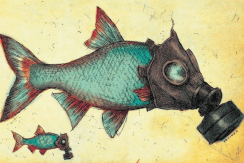
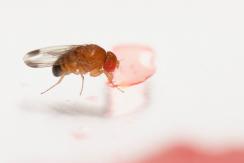
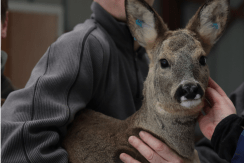
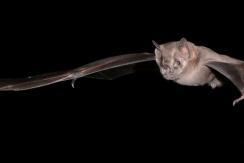

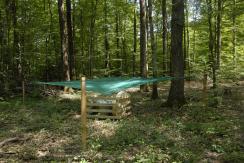
Vous aussi, commentez cet article